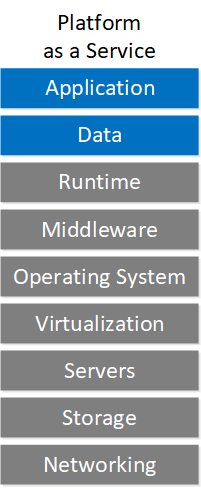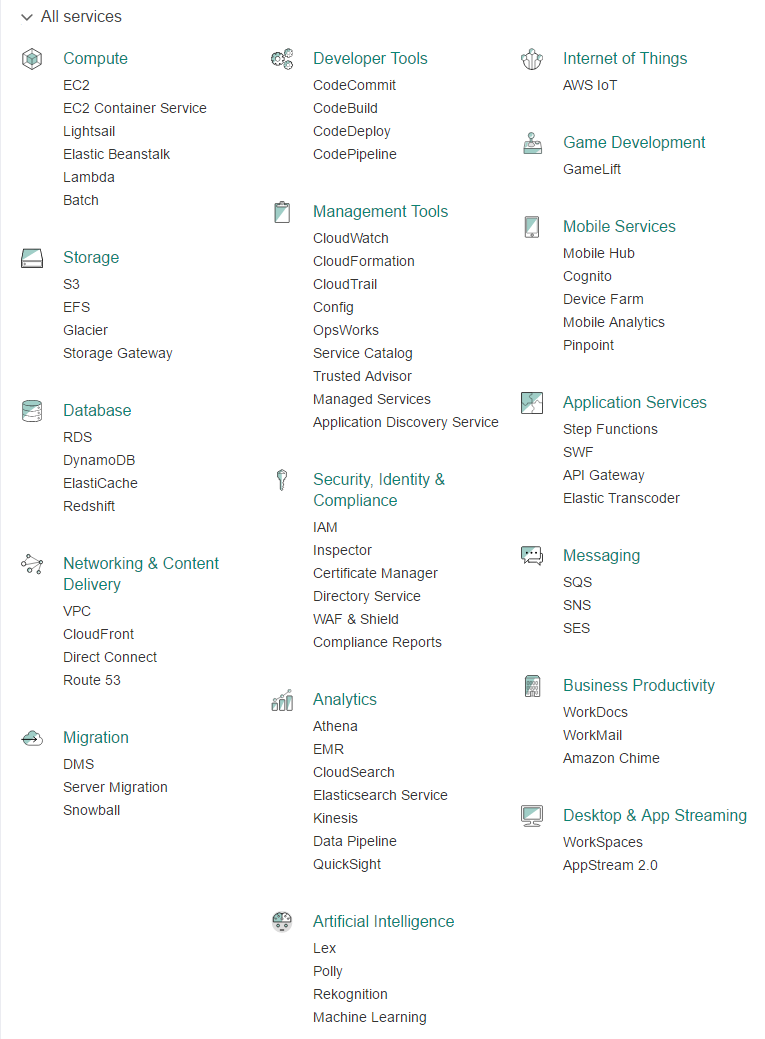Lesson Contents
We often see the “as a service” terminology when we talk about cloud computing. The National Institute of Standards and Technology (NIST) describes three services models in their definition of cloud computing:
- Infrastructure as a Service (IaaS)
- Platform as a Service (PaaS)
- Software as a Service (SaaS)
In this lesson, we’ll look at the different service models.
If you own and maintain your own infrastructure, you manage everything:

You maintain the hardware, networking, storage, etc.
Service Models
Let’s look at the different cloud service models and how they relate to the traditional on-premises infrastructure.
Infrastructure as a Service (IaaS)
IaaS offers network infrastructure as a service. Look at this model:

The cloud provider controls the underlying infrastructure:
- Virtualization
- Servers
- Storage
- Networking
The customer maintains the upper layers. The customer chooses the operating system, software, application(s), and data.
This service model is popular. You can choose the operating system you want which makes it easy to migrate on-premises servers to the public cloud.
Two examples of IaaS:
- Amazon AWS EC2
- Google Compute Engine
Platform as a Service (PaaS)
PaaS is like IaaS but we go three steps further. Check out the following model:

The cloud provider is also responsible for the operating system, middleware, and runtime. The customer maintains the data and application.
This is great for developers who want to run their PHP, Python or Java applications without worrying about the underlying layers. You upload your application and are ready to go.
Two examples of PaaS:
- Amazon AWS BeanStalk
- Google App Engine
Software as a Service (SaaS)
In the SaaS service model, the cloud provider maintains and provides everything.. Look at this model:

This is the service model most of us are familiar with. Examples are Office 365, Gmail, Facebook, Twitter, etc.
Everything as a Service (XaaS)
The trend nowadays is that we can get everything as a service. Cloud providers come up with new services they offer through the cloud. The X in XaaS is an unknown value, meaning “everything as a service”.
To give you an idea what kind of services there are, here is a screenshot of Amazon AWS:

This is a big list of services, there are over 140. Amazon AWS uses cryptic service names so it’s difficult to figure out what the service does by looking at the names.


Hello Rene congratulations for this great article!
Just one advice, I believe that these key terms needs to be corrected
on more then one place:
Infrastructure as a Service (SaaS)
Platform as a Service (PaaS)
Software as a Service (IaaS)
Thanks Ronie, I just fixed this. I moved the headings but forgot to change the acronyms.
Rene
You are welcome Rene, cheers !
Can you be more detailed with usages and real life scenarios using PaaS?
Hello Joshua
PaaS is a set of tools used to help build and deploy customized software applications that run in the cloud. When a company wants to develop an app, or a web platform, or a software package, it is able to use a PaaS platform that will automate many of the previously manual steps. PaaS allows you to take components or preconfigured building blocks (often in a GUI environment) and put them together to create your own application. This automation reduces the time to market dramatically as you don’t have to recreate components that already exist. T
... Continue reading in our forum